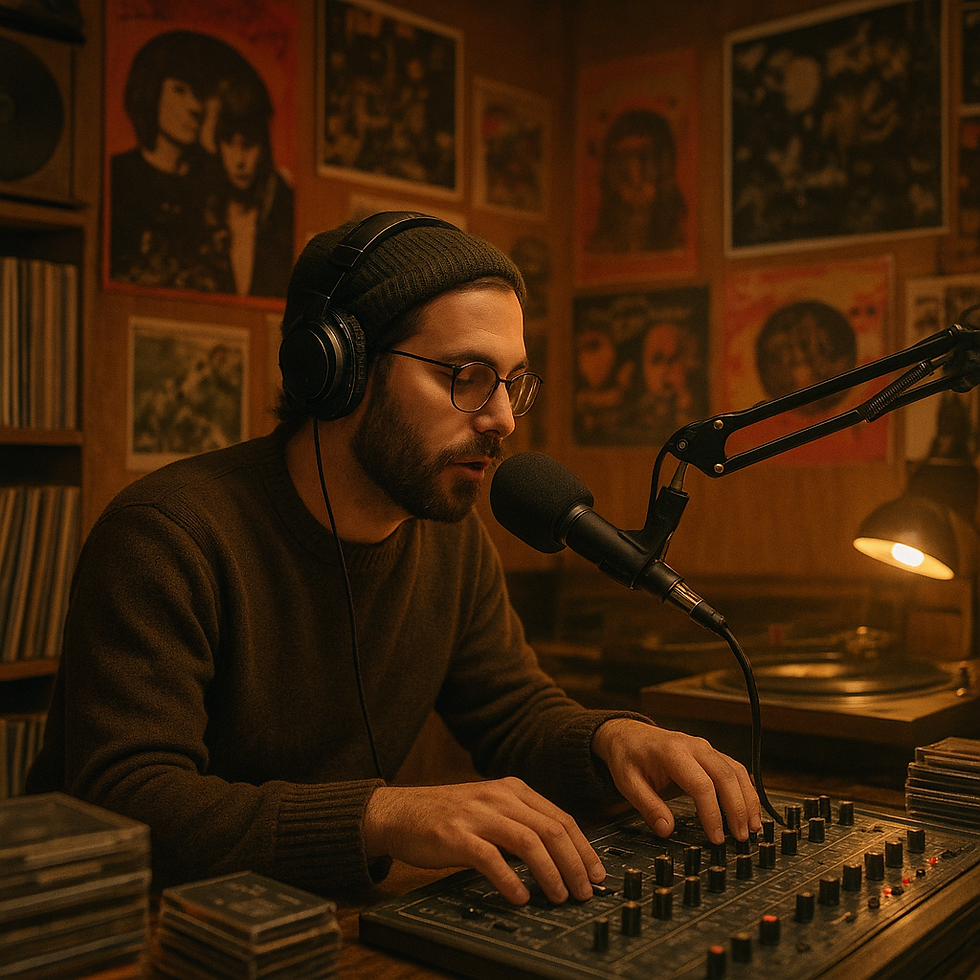
Photo- AI-Generated
Indie Music and Community Radio: Championing Local Talent and Diverse Voices
Community radio has long been a lifeline for independent music, giving local musicians a platform while elevating various voices and grassroots creativity.
27 September 2025
Indie is at home on the airwaves
Before streaming services and algorithms determined what we heard, community radio stations were critical platforms for indie bands to reach their first real audiences. Unlike commercial radio, which is driven by charts and big-label supremacy, community radio gives a platform to voices who are frequently disregarded. As a result, it became a cultural focus for local scenes, connecting artists to the communities where they lived.
Championing Local Talent
One of the defining characteristics of community radio is its emphasis on local talent. Indie bands, singer-songwriters, and experimental collectives that may never make it onto popular playlists frequently receive their initial listens here. Hearing their song played on a local radio station is a career-defining experience for many musicians, proving that their voice matters even without the backing of the business.
Stations such as KEXP in Seattle, WFUV in New York, and other community stations around the world have established reputations as tastemakers. They actively search out new independent bands, allowing listeners to discover new voices before they reach larger stages. By doing so, community radio fosters a more diversified and authentic music culture than mainstream media.
Diverse voices and representation.
Community radio is more than just promoting local guitar bands; it is about expressing the entire spectrum of music and human experiences. Programs frequently showcase marginalised perspectives, ranging from LGBTQ and feminist collectives to immigrant musicians that incorporate traditional sounds into indie environments. Community stations break free from traditional formats, resulting in a sound patchwork of indie music, spoken word, protest songs, and worldwide influences.
This openness maintains the indie concept of music that is not constrained by commercial formulas, but rather by innovation and authenticity. Community radio provides representation for musicians who would otherwise go unheard, boosting ideas that challenge the cultural mainstream.
A counterpoint to algorithms
In the digital age, music discovery is frequently directed by algorithms that aim to keep listeners engaged but also lock them into predictable loops. Community radio offers an antidote. DJs are frequently volunteers and curators with a strong love and expertise in music, reintroducing human connection into the act of discovery. Their choices appear deliberate, capturing the pulse of a place, a subculture, or a specific political moment.
For independent artists, this is crucial. While Spotify may bury a track in a playlist, community radio views it as part of an ongoing conversation with listeners. This results in not only exposure but actual interaction.
Keep the Spirit Alive
Even as digital platforms gain traction, community radio continues to evolve and prosper. Many stations now transmit globally online, transforming once-local personalities into global influencers. For independent performers, this means their music can reach far beyond their hometowns while remaining faithful to their roots.
At its core, community radio is a proponent of independence. It serves as a reminder that music is more than a product to be consumed; it is a shared experience that connects artists, fans, and entire communities.
Final Thoughts
Indie music and community radio share a sense of resilience and genuineness. Both refuse to be absorbed by commercial cacophony, instead focusing on the voices that make music feel human. Whether it's a late-night DJ airing a local band's first demo or a community show fusing indie and global sounds, the connection between indie music and community radio ensures that various voices are always heard.









